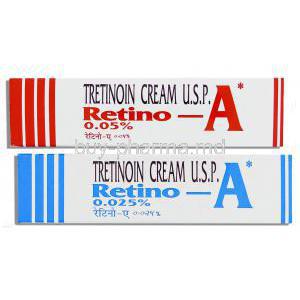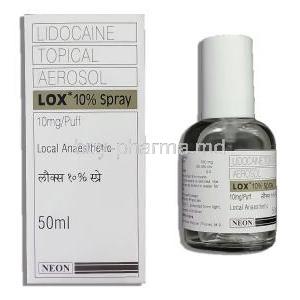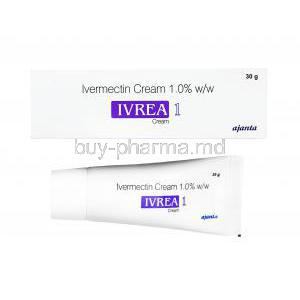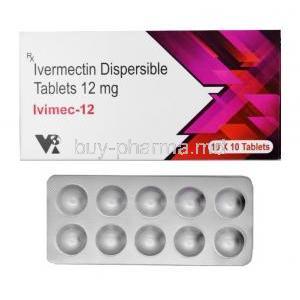Introduction to Clearz Plus Cream
Overview of Clearz Plus Cream
Clearz Plus Cream is a dermatologist-formulated topical treatment designed to address hyperpigmentation, dark spots, and uneven skin tone. With a potent blend of skin-brightening agents, it effectively targets melanin overproduction, resulting in a more luminous and even complexion.
Purpose and Key Benefits
- Reduces hyperpigmentation and melasma
- Diminishes dark spots and discoloration
- Enhances skin brightness and clarity
- Promotes an even skin tone
- Improves skin texture with continued use
Target Audience and Common Users
Individuals struggling with persistent pigmentation concerns, post-inflammatory hyperpigmentation (PIH), and melasma benefit the most from this formulation. It is suitable for all skin types, although users with sensitive skin should apply it cautiously.
Availability (Prescription vs. Over-the-Counter)
Clearz Plus Cream is generally available as an over-the-counter product in many regions, though some formulations may require a dermatologist’s prescription, depending on regulatory guidelines and the concentration of active ingredients.
Composition and Active Ingredients
Detailed Breakdown of Active Ingredients
The efficacy of Clearz Plus Cream stems from its scientifically backed ingredients, each playing a crucial role in skin brightening:
- Hydroquinone – A melanin-inhibitor that lightens dark spots
- Arbutin – A natural derivative that provides gentle depigmentation
- Kojic Acid – Reduces pigment production and evens skin tone
- Vitamin C – An antioxidant that brightens and fights free radicals
Role of Each Ingredient in Skin Treatment
These active components work synergistically to suppress tyrosinase, an enzyme responsible for melanin synthesis. Over time, skin appears visibly brighter and free from patchy discoloration.
Inactive Ingredients and Their Functions
- Emollients – Provide hydration and skin barrier support
- Humectants – Retain moisture and prevent excessive dryness
- Preservatives – Maintain product stability and shelf life
Differences from Similar Formulations
Unlike other depigmenting creams, Clearz Plus Cream offers a balanced formula that minimizes irritation while delivering effective skin-lightening benefits.
Primary Uses of Clearz Plus Cream
Treatment of Hyperpigmentation
Clearz Plus Cream actively reduces excessive pigmentation caused by environmental and genetic factors, offering a solution to stubborn dark spots.
Management of Melasma
By inhibiting melanin overproduction, it aids in controlling melasma, a skin condition that results in patchy, uneven pigmentation, particularly in sun-exposed areas.
Reduction of Dark Spots and Uneven Skin Tone
Prolonged use of Clearz Plus Cream results in a more uniform skin tone, diminishing post-inflammatory marks and sun-induced discoloration.
Treatment of Post-Inflammatory Hyperpigmentation (PIH)
Acne scars and residual pigmentation from skin trauma fade significantly with consistent application.
Skin Brightening and Lightening Properties
Its blend of brightening agents ensures a more radiant and rejuvenated complexion.
Anti-Aging Benefits (Fine Lines and Wrinkles)
Clearz Plus Cream also contributes to skin renewal, enhancing smoothness and reducing the appearance of fine lines over time.
Off-Label Uses of Clearz Plus Cream
Use in Acne Scar Reduction
Many dermatologists recommend it for lightening post-acne scars, making it a preferred choice for individuals with acne-prone skin.
Management of Sun-Damaged Skin
Sun exposure can cause uneven pigmentation; this cream helps reverse UV-induced discoloration.
Reduction of Dark Circles Under the Eyes
While not primarily formulated for this purpose, some users find it beneficial for brightening mild under-eye darkness.
Skin Barrier Repair and Hydration
Additional moisturizing components help strengthen the skin barrier, preventing transepidermal water loss.
Use in Combination with Other Dermatological Treatments
Often incorporated into skincare regimens alongside retinoids and exfoliants for enhanced efficacy.
How Clearz Plus Cream Works
Mechanism of Action of Active Ingredients
It directly inhibits the activity of tyrosinase, preventing excessive melanin production.
Role in Melanin Production Inhibition
By suppressing melanogenesis, it reduces the formation of new dark spots.
Effect on Skin Cell Renewal and Exfoliation
Encourages the shedding of pigmented cells, leading to a fresher, revitalized appearance.
Impact on Collagen Synthesis
Boosts collagen formation, improving skin texture and elasticity.
Dosage and Administration Guidelines
Recommended Dosage and Frequency of Application
Apply a thin layer once or twice daily, depending on skin tolerance.
Proper Method of Application
- Cleanse and pat the skin dry
- Apply a pea-sized amount to affected areas
- Follow with a moisturizer and sunscreen in the morning
Duration of Treatment for Different Skin Conditions
Visible improvement can be observed within 4–8 weeks, with continued use leading to sustained results.
Best Practices for Optimal Absorption
- Apply to dry skin for better penetration
- Avoid combining with irritating actives
- Use a broad-spectrum sunscreen to maintain results
Application on Sensitive Areas of the Skin
Exercise caution when using on delicate regions like around the eyes or lips.
Common Side Effects of Clearz Plus Cream
- Mild irritation and redness
- Dryness and peeling
- Temporary skin sensitivity
- Increased sun sensitivity
Serious Side Effects and Adverse Reactions
- Severe allergic reactions (rash, itching, swelling)
- Blistering or skin thinning
- Unusual skin discoloration
- Long-term risks of prolonged use
When to Discontinue Use and Seek Medical Help
If symptoms persist or worsen, consult a dermatologist immediately.
Drug and Ingredient Interactions
- Interaction with retinoids and steroids
- Effects when combined with oral medications
- Reaction with cosmetic products (moisturizers, sunscreens, etc.)
- Risk of increased irritation with exfoliants
Warnings and Precautions Before Use
Who Should Avoid Using Clearz Plus Cream
Individuals with a history of hypersensitivity to any active or inactive ingredients in Clearz Plus Cream should refrain from usage. Those suffering from chronic dermatological conditions, such as eczema or rosacea, may experience exacerbation of symptoms.
Patch Testing Before Full Application
To minimize the risk of adverse reactions, conduct a patch test before incorporating the cream into a regular skincare routine. Apply a small quantity to an inconspicuous area, such as the inner forearm, and monitor for any signs of irritation over 24 hours.
Importance of Using Sunscreen During Treatment
Exposure to ultraviolet (UV) radiation can counteract the efficacy of Clearz Plus Cream and may lead to further pigmentation. Regular application of a broad-spectrum sunscreen (SPF 30 or higher) is essential to protect the skin from photodamage.
Avoiding Use on Broken or Inflamed Skin
Application to compromised skin, including cuts, abrasions, or active lesions, can lead to increased irritation, burning, or stinging. Ensure the skin barrier is intact before use.
Contraindications for Clearz Plus Cream
Known Allergies to Active Ingredients
Users with a documented allergy to hydroquinone, kojic acid, or other depigmenting agents should avoid Clearz Plus Cream to prevent allergic reactions such as hives, swelling, or difficulty breathing.
Pre-Existing Skin Conditions That May Worsen
Conditions such as atopic dermatitis, psoriasis, or perioral dermatitis may worsen with use. Consulting a dermatologist before application is advised.
Contraindications with Certain Medications
Concurrent use with potent topical treatments, including retinoids and corticosteroids, may increase skin sensitivity and irritation. Interaction with systemic medications affecting skin integrity should also be considered.
Use in Individuals with Extremely Sensitive Skin
Those with highly reactive skin types should proceed with caution. If persistent irritation occurs, discontinuation is recommended.
Careful Administration Guidelines
Gradual Introduction for First-Time Users
New users should start with a minimal application frequency, such as every other night, to assess tolerance before transitioning to daily use.
Monitoring for Adverse Reactions
Common signs of intolerance include redness, dryness, and excessive peeling. Severe reactions, such as blistering or swelling, warrant immediate medical attention.
Adjustments for Users with Sensitive Skin
For individuals with delicate skin, pairing the cream with a barrier-supporting moisturizer can mitigate irritation. Avoiding excessive exfoliation is also crucial.
Recommended Guidelines for Individuals with Chronic Skin Conditions
Patients with pre-existing skin conditions should consult a dermatologist for customized usage instructions to prevent flare-ups or worsening of symptoms.
Special Considerations for Specific Groups
Administration to Elderly Patients
Skin Sensitivity Considerations
Aging skin tends to be thinner and more fragile, necessitating cautious application to prevent irritation or excessive dryness.
Adjustments in Frequency and Concentration
Using a lower concentration formulation or reducing application frequency (e.g., every third day) may enhance tolerability.
Administration to Pregnant Women and Nursing Mothers
Safety Concerns and Potential Risks
Some active ingredients, particularly hydroquinone, have uncertain safety profiles during pregnancy and lactation. The potential for systemic absorption raises concerns.
Medical Advice Before Use
Pregnant or breastfeeding individuals should consult a healthcare provider before initiating treatment.
Alternatives for Pregnancy-Safe Skincare
For pigmentation concerns during pregnancy, alternative ingredients such as azelaic acid or niacinamide are generally considered safer options.
Administration to Children and Adolescents
Age Restrictions and Safety Concerns
Clearz Plus Cream is typically not recommended for individuals under the age of 12 unless directed by a healthcare professional.
Guidelines for Use in Pediatric Dermatology
In cases of pediatric hyperpigmentation, lower concentrations and limited application areas may be advised.
Parental Supervision and Doctor Consultation
Caregiver oversight is essential to ensure proper application and prevent misuse.
Overdosage and What to Do in Case of Excessive Use
Signs and Symptoms of Overdose
Overuse may result in excessive skin irritation, burning, peeling, or paradoxical hyperpigmentation.
Potential Risks of Excessive Application
Long-term overuse of depigmenting agents may lead to ochronosis, a rare but irreversible condition characterized by bluish-black skin discoloration.
Steps to Take in Case of an Overdose
Discontinue use immediately, apply soothing emollients, and avoid further irritation. Seeking medical advice is recommended.
Medical Intervention and Supportive Care
In severe cases, dermatological intervention, including prescription-based anti-inflammatory treatments, may be necessary.
Proper Storage and Handling of Clearz Plus Cream
Recommended Storage Temperature and Conditions
Store at room temperature (15-25°C) in a cool, dry place away from direct sunlight to prevent degradation of active ingredients.
Preventing Contamination and Degradation
Ensure the tube or jar is tightly sealed after each use to prevent contamination and oxidation.
Shelf Life and Expiration Date Considerations
Adhere to the manufacturer’s expiration date. Using expired products can result in reduced efficacy or skin irritation.
Keeping It Away from Children and Pets
To prevent accidental ingestion or misuse, store out of reach of children and animals.
Handling Precautions and Safe Usage
Proper Dispensing to Avoid Contamination
Use clean hands or a sanitized applicator when dispensing the product to maintain hygiene.
Precautions When Handling Around Eyes and Mucous Membranes
Avoid application near the eyes, mouth, and nostrils to prevent mucosal irritation.
Avoiding Exposure to Direct Sunlight Post-Application
Sun exposure immediately after application can increase the risk of irritation and pigmentation. Nighttime application is preferable.
Safe Disposal of Expired or Unused Product
Dispose of expired or unused products according to local disposal regulations. Avoid flushing or discarding in general waste.
Conclusion and Final Recommendations
Summary of Key Benefits and Precautions
Clearz Plus Cream is an effective treatment for hyperpigmentation, but its use must be approached with caution to maximize benefits and minimize risks.
Importance of Following Dermatological Guidance
Consultation with a skincare professional ensures safe and effective usage, particularly for individuals with sensitive skin or underlying conditions.
When to Seek Professional Medical Advice
If severe irritation, unexpected skin reactions, or worsening pigmentation occur, seeking medical attention is imperative.
Long-Term Skincare Tips for Users of Clearz Plus Cream
- Incorporate a consistent skincare routine with hydrating and soothing ingredients
- Avoid excessive exfoliation to prevent skin barrier disruption
- Apply sunscreen daily to maintain results and prevent further pigmentation
Clearz Plus Cream FAQ
- What is the use of Clearz Plus cream?
- What is the use of Clearz?
- Is hydroquinone safe for the skin?
- Can I use hydroquinone everyday?
- Is hydroquinone the same as retinol?
- How long does hydroquinone lighten skin?
- Will my skin get darker if I stop using hydroquinone?
- How to apply hydroquinone on face?
- Can I leave hydroquinone overnight?
- Which is better, tretinoin or hydroquinone?
- Do dermatologists recommend hydroquinone?
- Is hydroquinone safe?
- Can I put hydroquinone on my whole face?
- What is the best alternative to hydroquinone?
- How do you know if hydroquinone is working?
- What not to mix with hydroquinone?
- What does arbutin do to the skin?
- Is arbutin safe for pregnancy?
- Does arbutin remove melasma?
- What happens if I stop using alpha arbutin?
- What not to mix with alpha arbutin?
- What does kojic acid do for your skin?
- Is it OK to use kojic acid everyday?
- Which is better, kojic acid or niacinamide?
- What are the disadvantages of kojic?
- Can kojic make your skin whiter?
- Who should avoid kojic acid?
- Can kojic acid lighten underarms?
What is the use of Clearz Plus cream?
Clearz Plus Cream is a skincare product commonly used to enhance the brightness and radiance of the skin tone.
What is the use of Clearz?
Clear Plus Cream is commonly applied to address issues, like sunburns and dark spots, on the skin caused by hyperpigmentation or wrinkles. It functions by boosting the regeneration of skin cells and diminishing production to enhance skin texture and skin tone.
Is hydroquinone safe for the skin?
Hydroquinone has often been improperly utilized and should not be applied as a general skin whitening solution; such practices are best avoided according to dermatologists who conducted research on the matter and determined that hydroquinone is safe for use in amounts and can provide favorable outcomes.
Can I use hydroquinone everyday?
Hydroquinone should be used on the skin areas only and applied twice a day for a period of three months; some individuals find that using it twice a week thereafter helps to sustain the progress achieved during the treatment phase. If there is no improvement after three months of use then it is advisable to discontinue the hydroquinone application.
Is hydroquinone the same as retinol?
Retin A cream contains a type of vitamin A that aids in revitalizing the skin, while hydroquinone is a lightening cream utilized to out skin tone and reduce spots. The purpose of both products is to maintain and improve the complexion and radiance of your skin following treatments such, as Botox or acne procedures.
How long does hydroquinone lighten skin?
You may observe a lightening of the skin within four weeks of starting treatment.
Will my skin get darker if I stop using hydroquinone?
If you stop using hydroquinone, there's a chance of experiencing rebound hyperpigmentation.
How to apply hydroquinone on face?
Apply an amount to cover the area that is affected then massage it in thoroughly.
Can I leave hydroquinone overnight?
Yes
Which is better, tretinoin or hydroquinone?
After a couple of months, you decide to start using both Tretinoin and Azelaic Acid, the latter being a skin-lightening component as they're suitable for long-term use.
Do dermatologists recommend hydroquinone?
Hydroquinone is considered safe and efficient when used under the guidance of a doctor to address a range of pigmentation issues.
Is hydroquinone safe?
Excessive usage of hydroquinone and mercury, over time, can lead to their accumulation in the body, potentially resulting in harmful effects.
Can I put hydroquinone on my whole face?
It is recommended to use hydroquinone on areas with discoloration and not over the face.
What is the best alternative to hydroquinone?
Other options for skin-lightening agents include mequinol, arbutin, and kojic acid.
How do you know if hydroquinone is working?
The skin-brightening effects of hydroquinone typically start to show after four weeks of use.
What not to mix with hydroquinone?
Hydroquinone doesn't mix well with benzoyl peroxide or hydrogen peroxide. Avoid using it with peroxide-based products.
What does arbutin do to the skin?
Arbutin is a component used to lighten the skin and help diminish spots and blemishes caused by hyperpigmentation.
Is arbutin safe for pregnancy?
Although arbutin is considered safe for skincare use by people, its effects, specifically during pregnancy, have not been thoroughly researched. Due to worries about the absorption of hydroquinone, into the system and its associated risks it is generally recommended to steer of using arbutin while pregnant.
Does arbutin remove melasma?
Arbutin breaks down to create hydroquinone and works to reduce the activity of the enzyme, which produces pigment (melanin). This helps lessen production and enhances the look of age spots, freckles, melasma, and post-inflammatory pigmentation.
What happens if I stop using alpha arbutin?
Skin reverts to its former condition
What not to mix with alpha arbutin?
Retinoids such as retinol and Tretinoin are recognized for their ability to heighten skin sensitivity. May lead to irritation if combined with alpha arbutin.
What does kojic acid do for your skin?
It assists in stopping your skin from producing tyrosinase—an enzyme involved in the formation of skin pigment (melanin).
Is it OK to use kojic acid everyday?
Yes
Which is better, kojic acid or niacinamide?
Slowing down production and improving skin texture, as well as minimizing the visibility of pores, helps in enhancing the brightening effect even more with the use of Kojic Acid and Niacinamide, respectively.
What are the disadvantages of kojic?
The typical adverse reactions associated with Kojic Acid might involve irritation, itchiness, or a burning feeling at the spot where it is applied.
Can kojic make your skin whiter?
Yes
Who should avoid kojic acid?
If someone experiences a rash or discomfort from using products with kojic acid, they should discontinue use. Consult a doctor if the symptoms persist after a few days. Its important to avoid using kojic acid on skin that is already red or irritated and to steer clear of applying it on broken skin as well.
Can kojic acid lighten underarms?
Kojic Acid helps lighten skin tone by reducing production, slowly fading spots, and evens out the skin tone under the arms over time.















